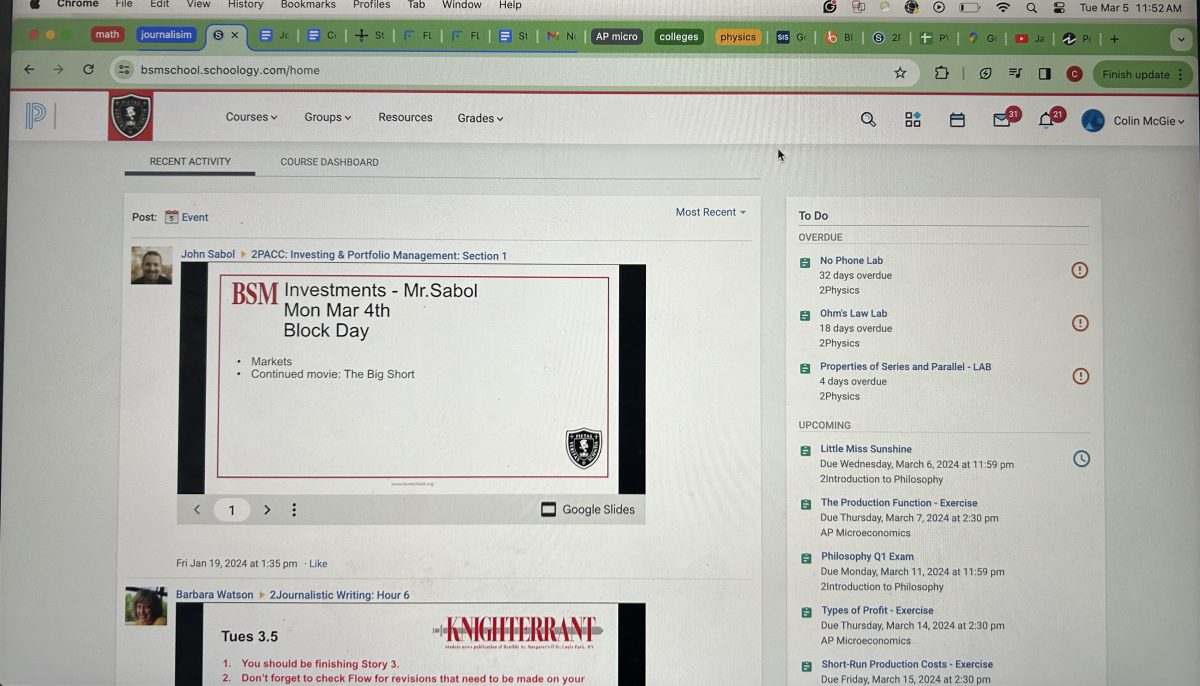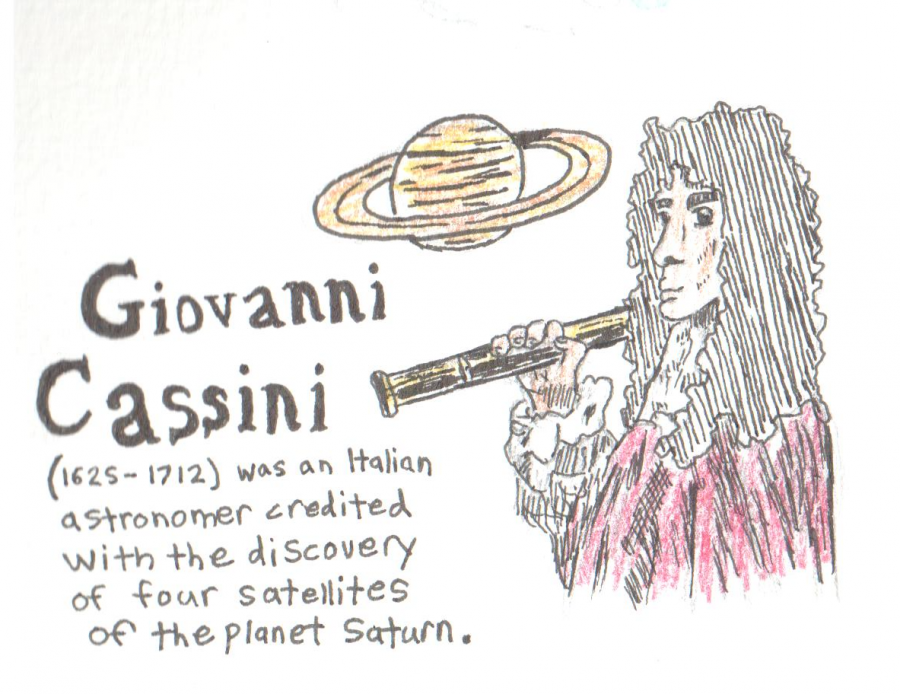Spaced Out: Cassini probe dies for science
Even as far away as Saturn, the demise of the Cassini points out the inherent good of humanity.
Illustration of Giovanni Cassini, who the Cassini probe is named after.
This year has seen a total solar eclipse over the mainland USA in August, the launch of Benilde-St. Margaret’s first astronaut Mark Vande Hei in September, and numerous successful vertical rocket landings by SpaceX that seem to be a trick in reversing time. Such a year has seen outer space return to the popular eye, both on a national level and in our own school. So, it makes sense to now celebrate another momentous occasion of 2017: the conclusion of the Cassini mission to Saturn, perhaps the best recognized extraterrestrial object after the Sun and Moon.
Classroom posters of Saturn’s rings over clouds the color of desert sand and Jupiter’s iconic Great Red Spot, colored like smoke over a wildfire with cosmic watercolors, have become childhood symbols of outer space, along with Buzz Aldrin’s saluting, suited-up figure, and the space shuttle. It’s easy to underestimate Carl Sagan’s quote from the Cosmos book: “This is the time when humans have begun to sail the sea of space.” Before Pioneer 11’s flyby, closely followed in the next two years by Voyager 1 and 2, images of Saturn were limited by the shroud of our atmosphere and the vast distance between Earth’s telescopes and those rings that fascinated Galileo.
By the time you’re reading this, the Cassini probe has already burnt up in the atmosphere of Saturn. Cassini didn’t just lazily saunter around Saturn taking pictures for 13 years. It will have orbited the ringed planet 271 times, circling through moons and rings in a constantly changing ellipse. The probe has finally expended its fuel after dozens of maneuvers around and among Saturn’s incredible moons. Its arrival was a spectacular entrance worthy of The Empire Strikes Back, and fitting for the first creation of humankind to ever enter Saturn’s orbit. On July 1, 2004, the probe, carrying a lander named Huygens, flew through a gap in the rings like a seven-year-long bullseye shot that split another arrow down the middle. On the way, Cassini also found the time to discover seven new moons of Saturn and test general relativity by firing a shot of its own, sending radio waves arcing around the dip in space-time near the Sun. A few months later, Cassini released a lander it had been carrying called Huygens on a one-way trip to Titan and gave us what is to this day the only photo from the surface of a body beyond Mars.

Encircling Saturn’s north pole is a starkly geometrical hexagonal jet stream. Its sharply defined angles stand almost in defiance to the gentle curves and spheres that dominate outer space. This phenomenon stands out to the human eye immediately and, after Cassini beamed back stunning pictures, it demands further study.
After such discoveries, why was Cassini doomed to the impenetrable depths of Saturn’s atmosphere, where it will be destroyed in under three minutes? Ask NASA’s Office of Planetary Protection, tasked with defending the solar system from invaders–from Earth. Their job is to ensure that Earthling organisms don’t contaminate terrestrial worlds that may hold life. So, Cassini’s termination isn’t all gloomy: it’s a message of optimism in the cold outer solar system and a truly noble death for our (hypothetical) extraterrestrial friends. In a world where every movie needs an anti-hero, every headline needs to report some crime, and humans can seem increasingly nihilistic, the scientists’ choice for Cassini’s demise makes an optimistic statement. On the frontiers of our solar system, humankind endears its automated representatives with our best traits: curiosity, self-sacrifice, and compassion.

















































